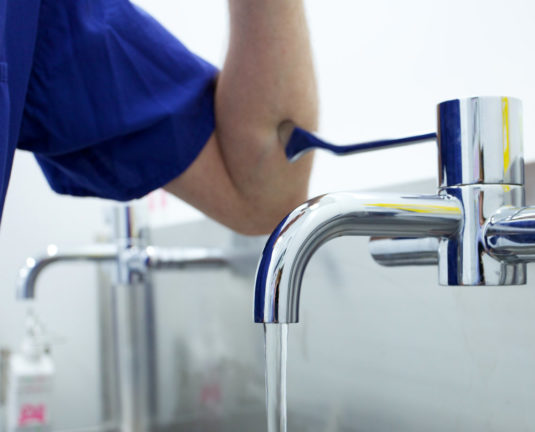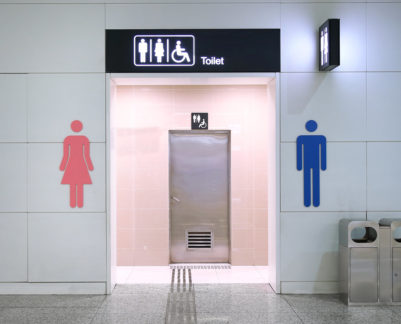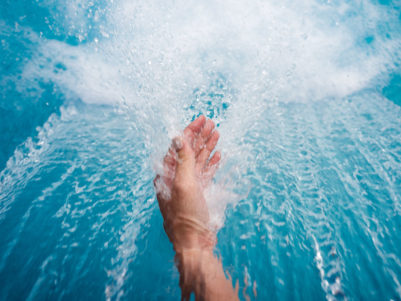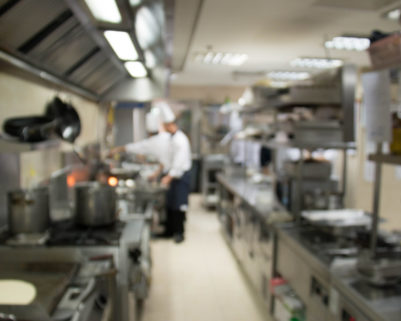Top 10 tips for better hospital water management
Rapid payback
Hospital budgets are under continued strain but financial savings of 20% and more can be made through water efficiency. The top 10 tips here for better hospital water management can provide quick savings through small repairs to existing infrastructure and by changing staff behaviour while some need an initial investment with the assurance of rapid payback.
Along with cost savings, there is a growing need to manage water use more effectively. The demand continues to grow while access to usable sources remains fairly static with only 1% of the total being available in rivers, lakes, atmosphere and underground wells for human consumption. With rising populations over the past 40 years, the water available per human has been halved.
So it makes both commercial and environmental sense to manage water use.


1: Strategic vision: set up a water management plan
The success of water saving strategies depends on the development of a coherent, long-term water management plan that has well-defined and achievable targets.
The strategic plan will need to look into all aspects of the hospital organisation, the teams involved, training needed and continual monitoring and feedback.
One of the main aspects of a water strategy is water efficiency, but it should be much wider than that, encompassing all water issues. The strategy should cover everything from flooding to hygiene with the aim is to create a central reference for all water issues.
Robust data is crucial and success will depend on the identification of water usage figures in detail. If not already in place, it is crucial to have meters for overall consumption data as well as sub-meters to show areas of highest consumption. This full water audit is the bedrock for tactical planning and action.
The water audit will identify consumption figures that can be compared with average benchmarks in the sector, highlighting where the savings can be made. The audit will be blended with data on water costs over a given period and the potential cost savings from implementation of efficiency.
It’s important to combine these so that a coherent case can be made to key stakeholders, particularly senior management, demonstrating the sound commercial basis for actions and expenditure, including ROI, as well as benefits for the environment.
2: Set guidelines and focus on each area
With the data in place, guidelines can be set for each area around the best ways to save and conserve water, with a range of low-flow technologies and products identified, and the potential savings from each.
Water champions should be appointed and assigned responsibility to cooperate with Building Management System managers in integrating water management into the BMS. For a sustainable strategy, it’s crucial to:
- Keep a close eye on the products and technologies chosen
- Regular maintenance to ensure optimum performance
- Identify leaks and any faults
- Inspect all fixtures and fittings
- Graph monthly bills
- Conduct internal monitoring
Leak detection is crucial, given that these account for 15–30 per cent of total water use in the healthcare sector. A small leak can waste 6 litres per hour while big leaks can drain between 400–800 litres per hour
3: Utilise the Building Management System
Using data collected from water sub-meters and temperature sensors in key area, a BMS should help to support water management through identification of leaks or excessive consumption as well as monitoring of water temperature for health and safety. The BMS will also improve management of boiler houses, cooling-tower cycles and maintenance.
Use the BMS to facilitate better boiler management. Optimising boiler performance and maintaining the system can save large volumes of water to deliver savings on utility costs while having a big impact carbon footprint, reducing energy use.
Savings can be made by
- Adjusting the boiler blowdown amount and frequency to reduce waste and to control total dissolved solids (TDS)
- Collection and reuse of steam condensate
- Controlling steam losses


4: Target toilet and bathroom savings
In the toilet and bathroom areas, there are big water savings that can be achieved. Installing a cistern displacement device which can save around 1 litre per flush while retrofitting a dual flush or lower flush system that provide the option for a half flush and make sure there are clear guidance instructions so users can opt for a shorter flush.
The best low flow toilets use up to 84% less water and 80% less energy on average than standard models while other models are duel flush. If full-scale refitting is not feasible, then the use of displacement bags in the cistern helps to substantially reduce water usage.
For urinals, controlled flushing with foot triggers and motion sensors can reduce consumption by 120–200 litres per day. And where feasible, install waterless urinals.
Taps and showers
An eco shower is one of the most effective ways of reducing the amount of water used, saving 50% on water usage with no compromise on quality of operation.
There are added benefits because using less should cut the amount of energy needed to heat the water and cut carbon emissions.
There is always the need for fittings that are robust and well-manufactured. The range of options for both fixed and hand eco showers is wide, with designs that will match any operational requirement. design.
Eco taps reduce water consumption by over 50% with no negative effect and if current taps need to stay in place then low-cost tap aerators that achieve a similar effect can be considered.
Again, maintenance programmes are essential. For example, a leaking toilet can waste 750 litres of water daily.
5: Dishwashing and laundry efficiency
Audit the use of dishwashers and washing machines to identify current usage and then establish washing routines that ensure the machines are full before use.
Where feasible, run a short rinse cycle that does not reduce efficiency and think if it is possible to install temporary holding tanks that can store water from previous rinse cycles for the first wash of the next cycle.
When replacing machines, water-efficient models should be selected. In larger facilities, industrial-standard machines will be required, and procurement should be based on the most efficient model, taking into account whole-life costings.
Replacement washing machines should have the best water consumption rating. Larger hospitals may need to investigate the installation of continuous batch washers that uses the rinse water for pre-washing and main operation. It’s important to make sure that water flow rates on tunnel washers and continuous batch washers are set to recommended settings.
Ozone laundry systems, which inject ozone into the water, are another option for maximising water savings. The ozone combines with laundry chemicals to provide a more efficient wash.
Maintenance is also of prime importance with regular tests for leaking dump valves and to make sure that water inlet valves close effectively while also checking level controls on water reuse tanks.


6: Hydrotherapy pool efficiencies
Hydrotherapy pools are used for a wide range of treatments and so temperature and movement of water is controlled and changed according to need. Pool covers can help to reduce evaporation losses and filtration units are recommended to recirculate water.
Water sub-meter readings should be done at the same time every day, late night and early morning, to identify any loss through leaks and regular maintenance is essential to prevent these.
7: Effective irrigation
The gardens and grounds of many hospitals need constant care but for maximum water efficiency, it is wise not to deploy automated systems as a single water sprinkler may consume as much as 900 litres of water an hour.
If these are absolutely necessary, then use of sprinkler timers is a highly effective way of minimising consumption, as are moisture sensors that avoid over-watering.
As part of the overall strategic plan, make sure there are procedures for manual watering while training gardeners to minimise water use. Native plant species may need less water so these are first choices, along with drought-resistant or perennial plants as these will need little water and will add diversity. In hotter months, make sure watering is done in the cooler evenings.
Hospitals can also make good savings by harvesting rainwater from roofs and gutters, diverting it to storage tanks or water butts for use in the gardens and grounds. An added benefit is that plants are healthier when watered with rainwater.
The gardening teams will also be tasked with keeping soil well composted with layers of wood chips to minimise moisture loss. Mulch and bark should on flower and tree beds reduces water loss through evaporation by up to 70%.


8: Savings in the catering areas
Catering areas consume a significant part of total water consumption in hospitals, and monitoring through sub-meters would be a valuable source of data for ongoing management.
While fitting low-flow taps is not an option for many busy kitchens, the most efficient models provide the flow needed for rapid pan filling and other tasks.
Training staff to avoid leaving taps running continuously where possible is another major benefit, by pre-soaking of utensils and dishes, for example. Washing fruit and vegetable in the sink rather than under a full flowing tap also make substantial savings.
In the same way, staff should be encouraged to not thaw food under running water and avoid using running water to melt ice, while where possible it’s a benefit to minimize ice machine usage as well as adjusting them to dispense less ice.
Where water channels are used to transport organic waste to a macerator, before release into the sewers, alternative methods should be investigated. If use is needed, channels be kept to a minimum with flow rates regulated and operate only when needed.
If the amount of organic waste entering the sewerage system is significant, water companies may impose a “trade effluent” charge so by reducing the amount of waste processed in this way will help to reduce or remove the charges.
9: Cleaning staff training
As part of the strategic plan, make sure that cleaning staff are trained on the best ways to reduce water consumption. These include points like not letting taps run and setting the optimum number of times for toilet flushing when cleaning.
10: Staff training essential
Although changing, the perception often is that water is effectively costless and limitless which means that its management can be affected by lack of staff awareness. To combat this, senior managers should fully support the water champions to coordinate the implementation of the water strategy, be sources of information and to report to top level management.
The champions need to have the resources and powers to conduct a water audit and coordinate the water strategy, which is a perfect opportunity to raise awareness, engage with staff, build dialogues and provide training.
Getting staff fully on board is crucial for any successful water saving programme so it’s essential that the strategy is fully explained to all employees, giving them the opportunity to suggest ways to improve water savings.
Motivated and properly trained staff should respond positively to targets that they understand and support, as well as guidelines and procedures for optimising water efficiencies. Open communication will also help with ongoing feedback on what is working well and what does not help, so that changes can be made.